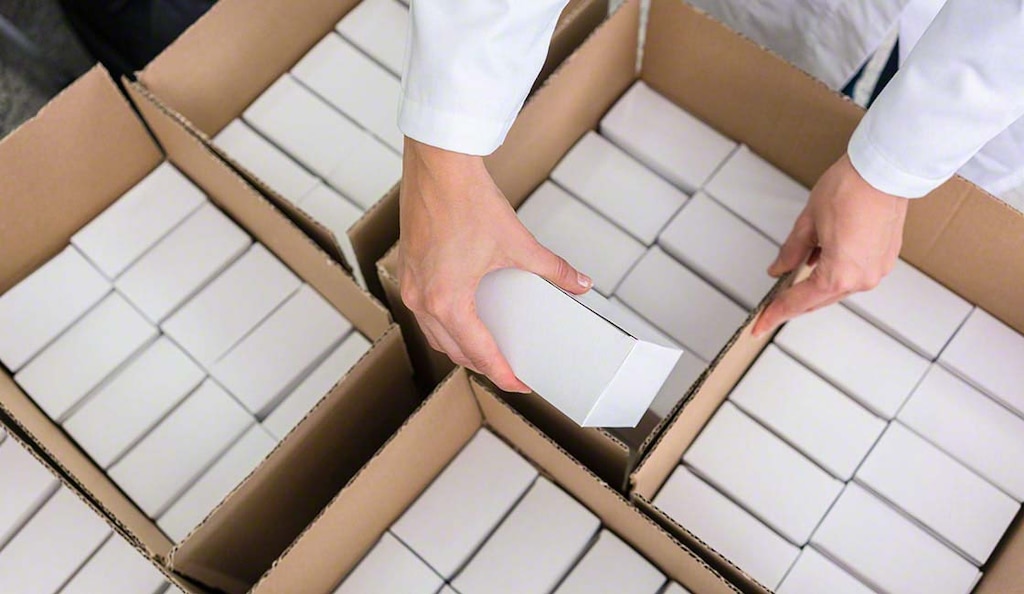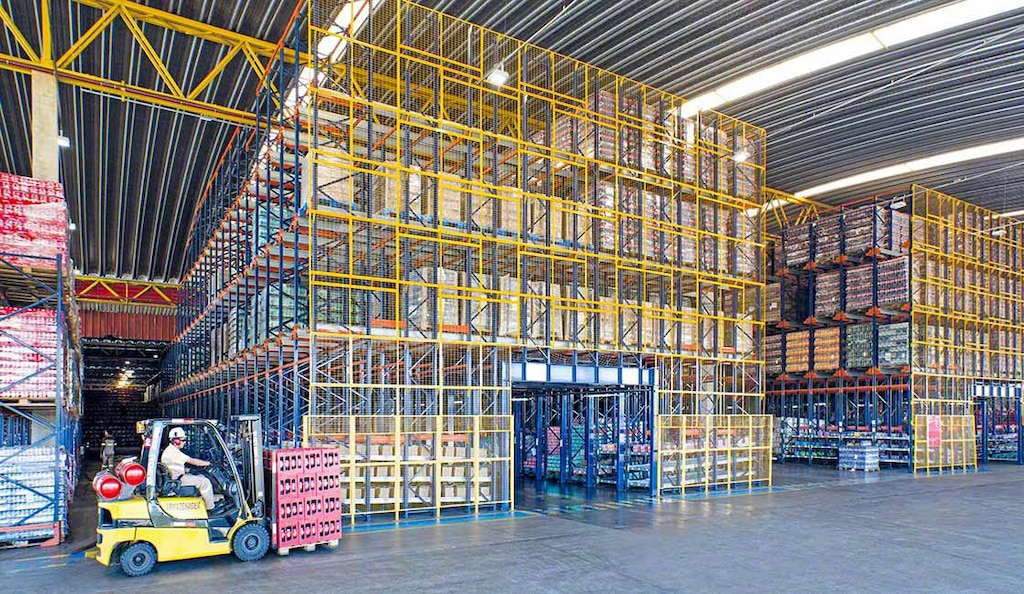
Cartonization and its benefits for logistics
Cartonization is the industrial process of packing products in cardboard boxes to protect them during transportation and storage. The practice is common in the food, pharmaceutical, and consumer goods industries, where merchandise requires packaging that keeps it safe as it moves along the supply chain.
What types of cartonization exist?
There are several cartonization methods depending on a company’s post-production logistics processes and the kinds of items being packed:
- Manual cartonization. Used for small batches or products that are difficult to handle with machines. In this scenario, associates assemble the cartons and place the merchandise inside.
- Semi-automatic cartonization. Machines form and assemble the boxes, but goods are placed inside manually.
- Automatic cartonization. The entire process is automated, from carton assembly to product insertion and final sealing. This method is common in large industries that require high-speed and efficient packaging.

How does cartonization work?
The cartonization process typically follows these steps:
- Carton forming. Flat cardboard boxes are unfolded and assembled, remaining open at the top.
- Product insertion. Items are placed inside the box, either manually or automatically. Digitalization, supported by a warehouse management system like Easy WMS, supports error-free picking.
- Closing and sealing. Boxes are closed and sealed with glue, tape, or staples to protect the contents.
- Labeling and sorting. Finally, boxes are labeled for easy identification and organization in the warehouse or during transportation.
Automated systems use sensors and cameras to monitor quality, ensuring that each box is properly formed, sealed, and labeled.
What benefits does cartonization have?
Cartonization has numerous advantages for companies and their supply chains:
- Product protection. Cartons shield items from physical damage and unfavorable external conditions (e.g., humidity) during storage and transportation.
- Space optimization. Using appropriately sized boxes cuts down on wasted space, allowing for higher cargo volumes and fewer shipments.
- Reduced transportation costs. Maximizing transportation efficiency lowers fuel expenses. Additionally, optimizing space inside boxes minimizes the risk of damage, decreasing returns and related costs.
- Easier handling. Packing products in boxes simplifies handling and enables companies to leverage automatic equipment such as conveyors. Robotic systems are ideal for accelerating ecommerce fulfillment.
- Streamlined inventory and picking processes. Packaging items in labeled and barcoded cardboard boxes improves stock tracking and boosts productivity in storage and picking operations. Methods like wave picking speed up order processing by grouping tasks based on zones, timing, or priority.
- Improved sustainability. Cardboard is recyclable and biodegradable, making cartonization an environmentally friendly option. It helps businesses comply with sustainability regulations and best practices.
To sum up, cartonization boosts operational efficiency, lowers costs, and provides environmental benefits. Therefore, it’s critical for supply chain competitiveness.
Examples of companies using cartonization
Organizations across multiple industries rely on cartonization to package their goods. Here are some examples:
- Nestlé. One of the world’s largest food companies, Nestlé uses cartonization to package cereals, chocolates, and other food products. Its production plants employ automated cartonization systems to streamline the process and ensure goods reach consumers in optimal condition. A case in point is Nestlé’s Nescafé Dolce Gusto plant in Girona (Spain), outfitted with Mecalux automated storage and internal transport systems.
- Unilever. The multinational company Unilever, known for its food and consumer goods, uses cartonization for packaging detergents, food items, and personal hygiene products. In its warehouse in Pouso Alegre (Brazil), the retailer stores 83,500 pallets containing a wide range of SKUs.
- IKEA. The Swedish multinational leverages cartonization to package furniture, home goods, components, and accessories. In Malacky, Slovakia, IKEA Components operates an automated warehouse that streamlines the storage of finished products coming from production lines. Cardboard plays a key role in the company’s sustainable and efficient packaging strategy for transporting its merchandise globally.
- Coca-Cola. In the beverage industry, Coca-Cola employs cartonization to package bottles and cans on its production lines. This allows the business to group multiple units into cardboard boxes for distribution to stores and supermarkets. Coca-Cola Refrescos Bandeirantes employs this method at its facility in Trindade (Goiás, Brazil). There, the retailer manages 14,200 SKUs and fills 3,000 orders daily using Mecalux storage systems.
In addition to its packaging efficiency, cartonization is an asset due to its versatility and sustainability; as cardboard is recyclable, it helps lessen organizations’ environmental impact.

Cartonization: essential for optimized logistics operations
Cartonization has become a vital process in modern logistics. It helps optimize space usage, reduce costs, and protect products during transportation and storage. By adopting efficient packaging strategies, companies can maximize their shipping capacity, minimize the risk of damage, improve sustainability, and increase operational productivity.
At Interlake Mecalux, we offer a variety of automated storage and internal transport systems capable of managing any type of box, tote, or bin. If you’re looking to optimize your logistics processes, be sure to contact us. We’ll provide guidance and support you in implementing the solution best suited to your company’s needs.
